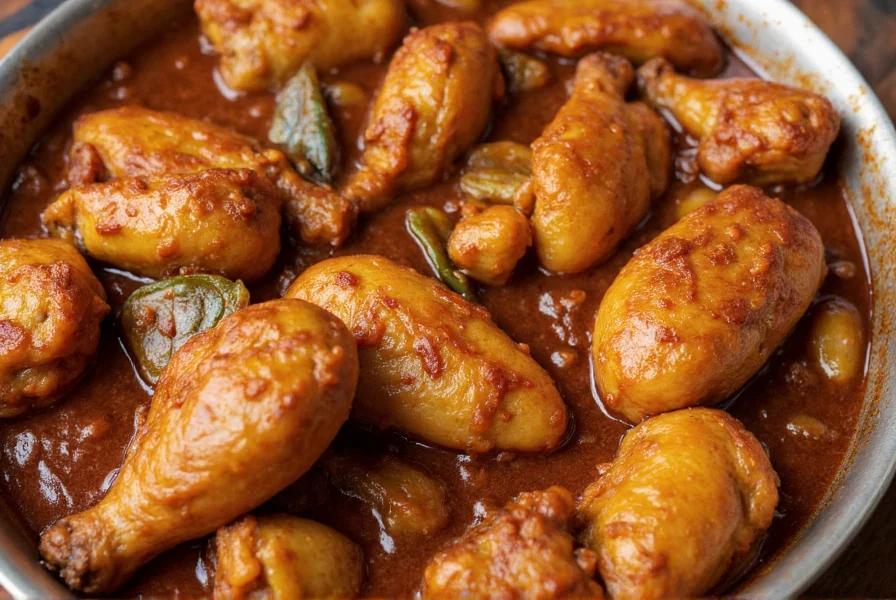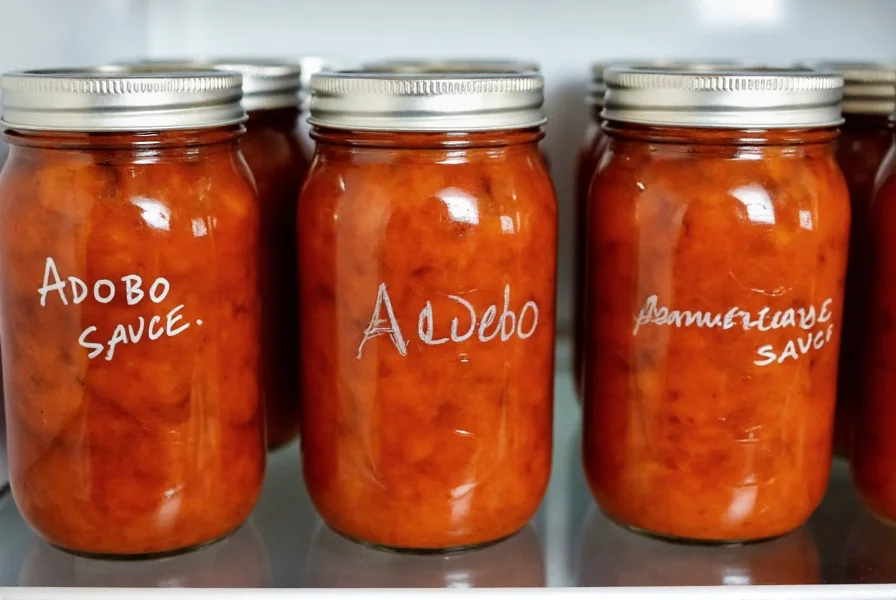Understanding these differences is essential for authentic cooking. Filipino adobo sauce creates a tangy, savory foundation for meats like chicken or pork, simmered until tender in the flavorful liquid. Mexican adobo sauce, often reddish-brown, typically incorporates ancho or guajillo chilies, giving it a smoky, moderately spicy character perfect for braising or as a base for other sauces.
Origins and Cultural Significance
The term "adobo" comes from the Spanish word "adobar," meaning to marinate. Spanish colonizers documented Filipino cooking methods using vinegar and salt as preservatives in the 16th century. Filipino adobo evolved as a practical cooking technique in tropical climates where food preservation was essential. Mexican adobo developed separately, influenced by indigenous chili pepper traditions combined with Spanish vinegar-based preservation methods.
Despite the shared name, these sauces represent completely different culinary traditions. Filipino adobo isn't technically a "sauce" in the traditional sense but rather a cooking method where ingredients are braised in the marinade. Mexican adobo refers specifically to a prepared sauce, often sold in cans or prepared from dried chilies.
Key Ingredients Compared
| Feature | Filipino Adobo Sauce | Mexican Adobo Sauce |
|---|---|---|
| Primary Liquid | Vinegar (cane or coconut) | Vinegar |
| Color Base | Soy sauce | Dried chilies (ancho, guajillo) |
| Key Aromatics | Garlic, bay leaves | Garlic, cumin, oregano |
| Heat Level | Mild (peppercorns) | Moderate (chili-based) |
| Texture | Thin, broth-like | Thick, paste-like |
Authentic Preparation Methods
Creating genuine Filipino adobo sauce requires balancing vinegar's acidity with soy sauce's umami. Traditional recipes use equal parts cane vinegar and soy sauce, though regional variations exist. The sauce develops complexity when garlic is sautéed until golden before adding liquids. Whole black peppercorns and bay leaves complete the flavor profile. Unlike many sauces, Filipino adobo improves with longer cooking as tough cuts of meat become tender in the acidic liquid.
Mexican adobo sauce preparation begins with rehydrating dried chilies. Authentic versions toast the chilies lightly before soaking them in hot water. The softened chilies blend with vinegar, garlic, and spices into a smooth puree. Some regional variations include tomatoes or fruit like guava for sweetness. Commercial Mexican adobo often contains additional preservatives and thickeners not found in homemade versions.

Practical Cooking Applications
Filipino adobo sauce works best as a braising liquid rather than a finishing sauce. The magic happens when proteins simmer directly in the sauce, absorbing flavors while the liquid reduces to a glossy coating. Chicken thighs, pork belly, or even tofu become exceptionally flavorful using this method. Many home cooks save some of the cooking liquid to spoon over rice—a traditional serving method.
Mexican adobo sauce serves multiple purposes in the kitchen. It functions as a meat marinade, particularly for carne adobada (adobada pork). Chefs also use it as a base for moles or diluted with broth for enchilada sauce. When working with canned Mexican adobo, many cooks enhance the flavor with fresh ingredients like orange juice or additional spices.
Common Misconceptions Clarified
Many grocery stores sell "adobo seasoning" which differs significantly from adobo sauce. Adobo seasoning is a dry spice blend without liquid components, commonly used in Latin American cooking. Similarly, "adobo sauce" labeled products often represent the Mexican style, causing confusion for those seeking Filipino-style adobo ingredients.
Another frequent misunderstanding involves the salt content. Filipino adobo relies on soy sauce for saltiness, so additional salt is rarely needed. Mexican adobo's salt level varies significantly between commercial brands. Always taste before seasoning when using store-bought versions.
Storage and Shelf Life Considerations
Homemade Filipino adobo sauce keeps well refrigerated for up to one week or frozen for three months. The vinegar content acts as a natural preservative. Mexican adobo sauce, particularly homemade versions, lasts about one week refrigerated. Commercial canned adobo remains safe until the expiration date when unopened, but should be transferred to a glass container after opening and used within 5-7 days.

Substitutes and Adaptations
When authentic adobo sauce isn't available, thoughtful substitutions maintain dish integrity. For Filipino adobo, combine equal parts rice vinegar and soy sauce with crushed garlic and peppercorns. Mexican adobo substitutes work best by blending chipotle peppers in adobo (the canned product) with additional vinegar and spices.
Dietary adaptations exist for special requirements. Gluten-free cooks should verify soy sauce ingredients or use tamari in Filipino adobo. For reduced sodium versions, use low-sodium soy sauce and compensate with additional garlic and vinegar. Vegan preparations work naturally with both styles since traditional recipes contain no animal products.
FAQ: Frequently Asked Questions
What's the difference between adobo sauce and adobo seasoning?
Adobo sauce is a liquid preparation used for marinating and cooking, while adobo seasoning is a dry spice blend. Filipino adobo sauce contains vinegar and soy sauce, whereas Mexican adobo sauce features chili peppers. Adobo seasoning typically includes garlic powder, onion powder, oregano, and salt without liquid components.
Can I use Mexican adobo sauce for Filipino adobo recipes?
Mexican adobo sauce won't produce authentic Filipino adobo flavor. The Mexican version contains chili peppers which create a reddish color and spicy profile, while Filipino adobo relies on vinegar and soy sauce for its characteristic brown color and tangy-savory taste. For Filipino recipes, use the traditional vinegar-soy sauce base instead.
How long does homemade adobo sauce last in the refrigerator?
Properly stored in an airtight container, homemade Filipino adobo sauce lasts 5-7 days refrigerated. Mexican adobo sauce made from fresh ingredients keeps for about one week. The vinegar content acts as a natural preservative. For longer storage, freeze either version in ice cube trays then transfer to freezer bags for up to three months.
Why does my Filipino adobo turn out too sour?
Excessive sourness usually results from vinegar overpowering other flavors. Traditional Filipino adobo balances vinegar with soy sauce. Try reducing vinegar quantity slightly or adding a pinch of sugar to counter acidity. Remember that the sauce's acidity mellows during cooking, so avoid adjusting too early in the preparation process.
Can I make adobo sauce without soy sauce for gluten-free requirements?
Yes, use tamari (gluten-free soy sauce) or coconut aminos as substitutes in Filipino adobo sauce. For Mexican adobo, gluten isn't typically a concern as the sauce is naturally gluten-free. Always check commercial product labels, as some brands may add wheat-based ingredients as thickeners or preservatives.










 浙公网安备
33010002000092号
浙公网安备
33010002000092号 浙B2-20120091-4
浙B2-20120091-4